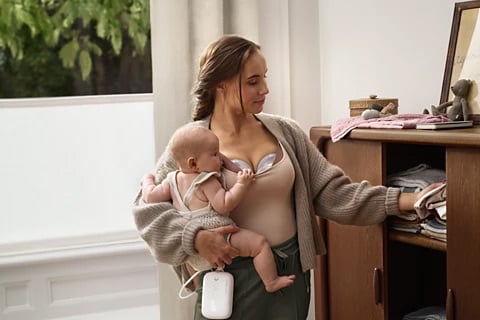
Which breast pump is best for your needs?

Deciding what baby bottles to buy can seem a little daunting. There are so many options available, so how do you decide which are the best baby bottles? In this guide, we will explore everything you need to know to make an informed decision on what bottles and what bottle teats to use including: Read on to discover everything you need to know about the best baby bottles and teat sizes for your baby.
Before we start comparing different bottle and teat features, let’s explore some FAQs on what bottles and teats to use: Top tip: If you want more information on how to find the perfect flow with Philips Avent Natural Response teats, check out our teat flow guide video.
Whether you choose to formula feed or express breastmilk, choosing the right bottle is key. You will need between 4 and 6 bottles, preferably of a smaller size as your baby’s stomach is smaller when they are newborn. As they grow you will be able to adjust to the larger size bottles.1
Choosing a bottle that mimics the breast will help to make the transition from breast to bottle and vice versa easier. For those wondering about the differences between Avent natural response vs natural, we’re here to help.
Philips Avent Natural Response with AirFree vent bottles are designed to ease common feeding issues like colic, gas, and reflux. With the innovative AirFree vent, they ensure the teat stays filled with milk, not air, promoting upright feeding in various positions. This reduces air intake, helping babies feed comfortably.
If that doesn’t sound like the perfect match to you, we also have the Philips Avent Natural Response bottles without the vent.
Either option – with or without the vent – comes in either BPA-free silicone or glass variants and different sizes.
Holding the bottle horizontally, place the teat to your baby’s mouth to encourage them to latch on. Allow them to feed until they are full, keeping an eye on their cues to prevent over-feeding. For more advice, read our guide to how to bottle feed your baby the right way.
The flow rate is indicated by a number system on bottle teats. For example, Avent bottle teat sizes range from flow 1 (newborn flow) to flow 6 (fast flow for 6m+), with the slowest flow being best for a newborn. As they grow and develop, you will be able to start changing the teat accordingly. You can always mix and match your bottles and teats for the best fit for your baby.
So, what are the best baby bottles? Here we’ll compare the benefits and features of different Philips Avent bottle sizes: Philips Avent Natural Response baby bottles


Top tip: There is no ‘one-size-fits-all’ when it comes to baby bottles. If your baby is refusing one type of bottle or finding it hard to drink from the bottles you’re using, they may benefit from trying a different bottle.
Whether you’re wondering what teat flow to use for a newborn, or you simply want to compare your options, here’s an overview of the features, benefits, and Avent teat sizes: Top tip: Wondering if your baby is ready for the next teat size? If your baby is sucking fast but not swallowing as often or is taking longer than usual to finish their milk, it’s probably time to introduce the next flow rate.

Here are our top tips for the best baby bottle care: Top tip: Cleaning and sterilising your baby bottles and other equipment is key as it helps to kill off bad bacteria that can make your baby ill. Check out our guide to learn simple steps to clean and sterilise your baby’s bottles. With this guide, you have everything you need to be able to understand what baby bottles to buy, and which bottles and teats are best for your baby. * 0% BPA, following EU regulation 10/2011